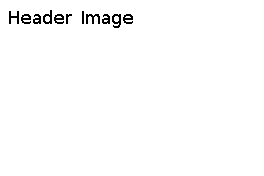Image on serial console¶
The image on serial console library prints the screen as a header file on the serial console.
The header file is added to the source code and included in the project of the application statically at build-time. Once the application is built, it loads the image into the frame-buffer, ready to be displayed dynamically at run-time.
Tip
This method is recommended for MCUs, as the management of the SD-card is rather slow and prone to interferences.
The image on serial console library is available on the Evaluation and Commercial editions.
Danger
Because the serial library manages windows, it requires a screen of type Screen_EPD_EXT3_Fast provided by the PDLS_EXT3_Advanced_Fast or PDLS_EXT3_Advanced_Touch libraries.
Configure¶
Warning
Ensure the screen is declared and initialised according to the configuration procedure.
#include "hV_Serial_Image.h"
The pre-processor statement includes the serial library. It should be mentioned after the statement for the screen library.
No external SD library is required, as the header file is sent to the serial console.
Serial_Image myFile(&myScreen);
The constructor Serial_Image() sets the link to the screen. It should be mentioned after the constructor of the screen.
As the header file is printed on the serial console, the SD-card doesn’t need to be initialised.
Use¶
Generate¶
uint8_t result = myFile.saveScreen("Image");
saveScreen() prints the screen as a header file on the serial console.
The required parameter is
- The first line provides the name of the file without the
.hextension.
1 2 | |
The function returns RESULT_SUCCESS if successful, RESULT_ERROR otherwise.
saveWindow() save a window on a header file on the SD-card as an image.
The required parameters are
-
The first line provides the name of the file without the
.hextension. -
The second line defines the window with vector coordinates.
The coordinates are rounded as multiple of 8.
For example, the vector coordinates (70, 44, 155, 64) are changed to (70, 40, 155, 72).
The printed header file contains the structure Image_MyHeader.
Capture the content of the serial console and copy it into a header file, for example Image.h.
The function returns RESULT_SUCCESS if successful, RESULT_ERROR otherwise.
Display¶

#include "Image.h"
uint8_t result;
result = myFile.readScreen(Image_Image);
if (result == RESULT_SUCCESS)
{
myScreen.flush();
wait(4);
}
The application needs to include the header file previously generated.
readScreen() loads the image into the frame-buffer, ready to be displayed.
The function returns RESULT_SUCCESS if successful, RESULT_ERROR otherwise.
Example¶
This is the core of the code from example Serial_Print_Image.ino.

void displayPrintSerial()
{
// No SD-card
uint8_t result;
myScreen.setOrientation(myOrientation);
myScreen.selectFont(fontLarge);
myScreen.clear();
myScreen.gText(8, 8, "Header Image");
myScreen.flushFast();
// Print to serial console
result = mySerialImage.saveScreen("Image_Image");
wait(4);
}
The generated header file contains the image as a structure.
// Image as header file generated by hV_Serial_Image
// SDK
#include "hV_HAL_Peripherals.h"
// Release
#ifndef SERIAL_IMAGE_RELEASE
#define SERIAL_IMAGE_RELEASE
#include "hV_Image.h"
static const uint8_t Table_Image[] =
{
0x00, 0x00, 0x00, 0x00, 0x00, 0x00, 0x00, 0x00, 0x00, 0x00, 0x00, 0x00, 0x00, 0x00, 0x00, 0x00, 0x00, 0x00, 0x00, 0x00, 0x00, 0x00, // v= 0
// ...
0x00, 0x00, 0x00, 0x00, 0x00, 0x00, 0x00, 0x00, 0x00, 0x00, 0x00, 0x00, 0x00, 0x00, 0x00, 0x00, 0x00, 0x00, 0x00, 0x00, 0x00, 0x00, // v= 263
};
const image_s Image_Image =
{
.minWindowH = 0,
.minWindowV = 0,
.maxWindowH = 175,
.maxWindowV = 263,
.depth = 2,
.size = 5808,
.table = Table_Image
};
#endif // SERIAL_IMAGE_RELEASE
The window uses rectangular coordinates.
This is the core of the code from example Serial_Read_Image.ino.
#include "Image.h"
void displayReadHeader()
{
myScreen.setOrientation(myOrientation);
myScreen.clear();
myScreen.selectFont(fontLarge);
myScreen.gText(4, 4, "Reading the header back...");
myScreen.flushFast();
wait(4);
result = myHeader.readScreen(Image);
if (result == RESULT_SUCCESS)
{
myScreen.flush();
wait(4);
}
}